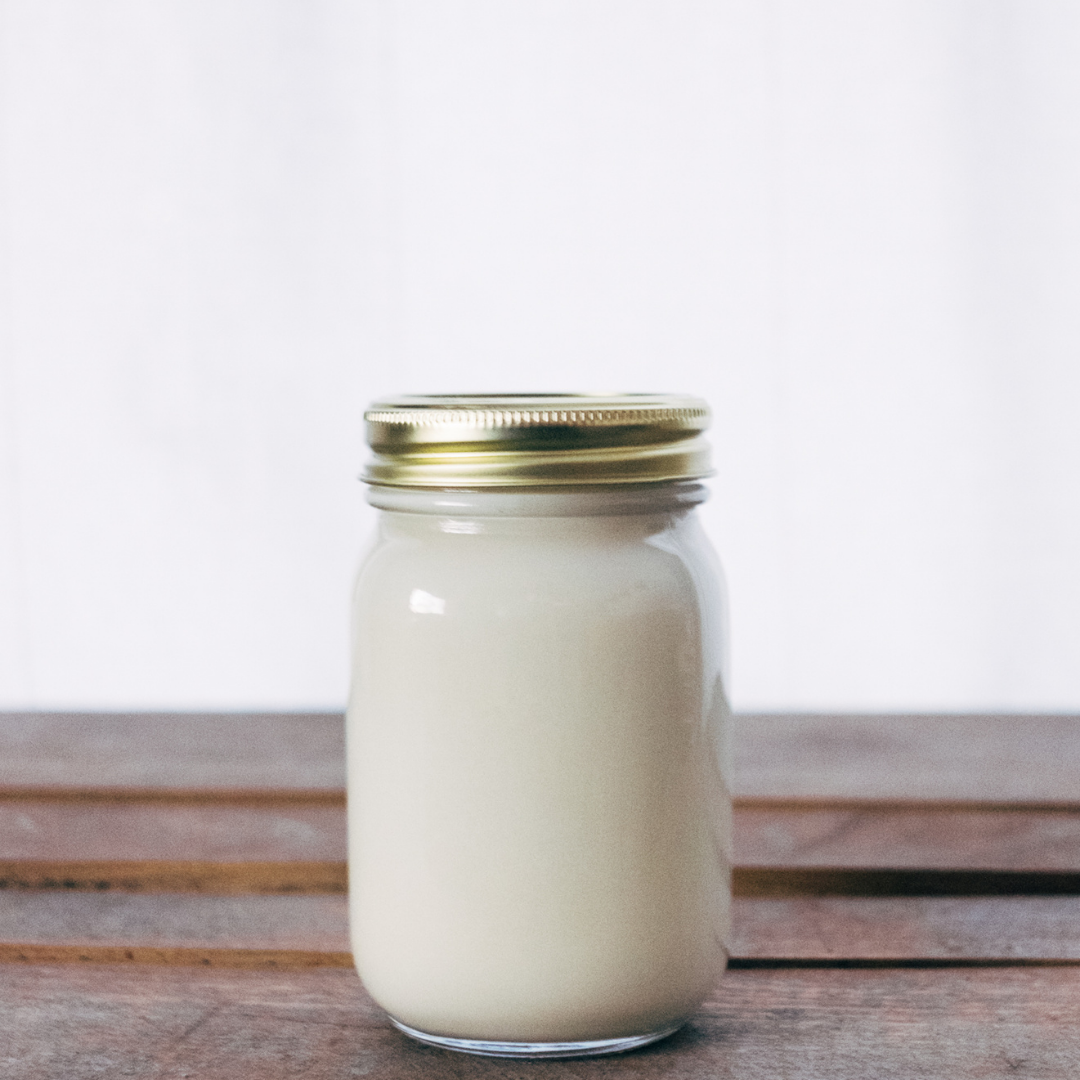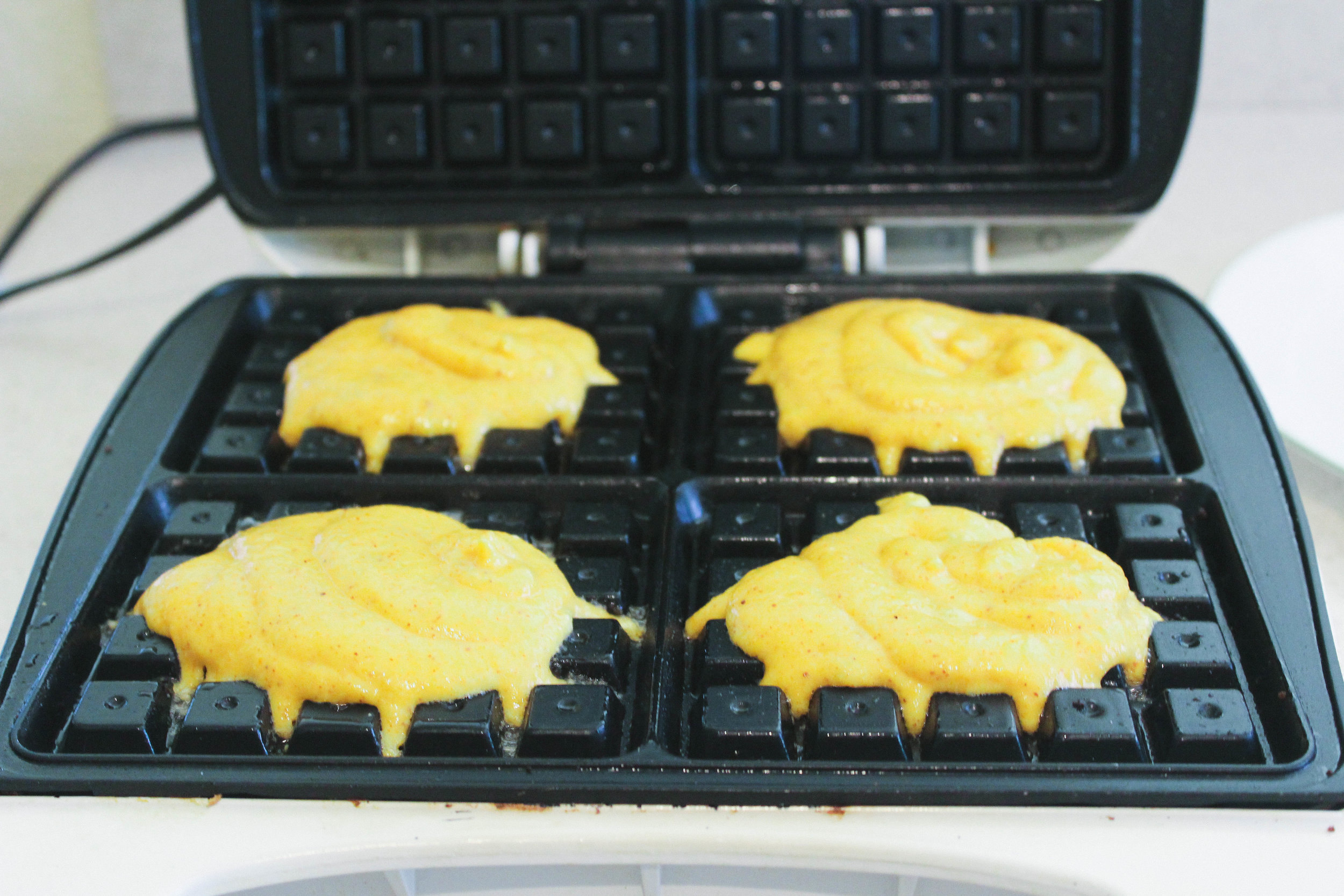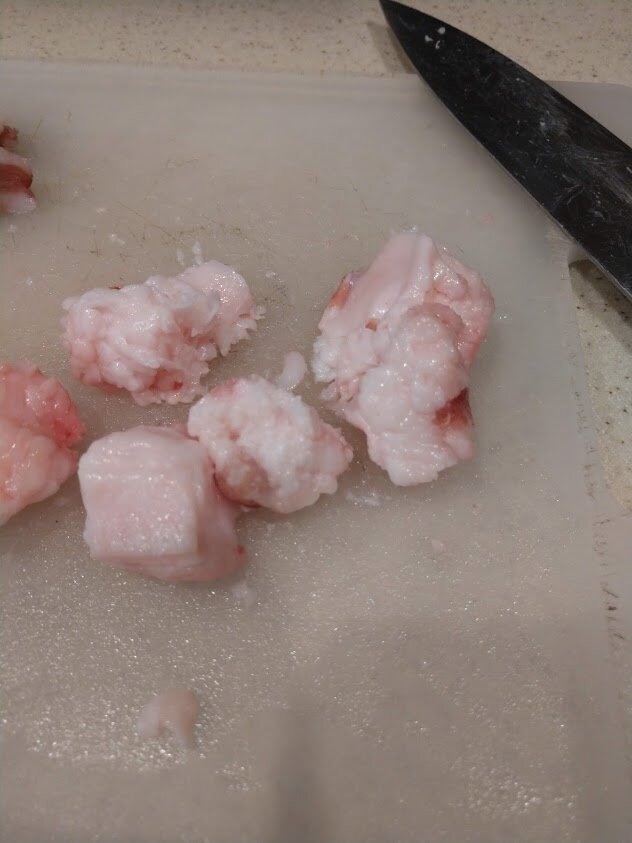Recently the idea struck me to try to make a GAPS waffle. I had made many GAPS pancakes, so I thought maybe it could be done. And it turns out... it can! It was not a simple task, however.
The ratios are fairly different than a GAPS pancake... for one thing, putting in too many eggs caused it to overflow and made quite a mess. But after some trial and error I found a recipe that is delicious, and delivered consistent results (which is a big deal when cooking without flour).
I was also excited to make this a dairy-free recipe (except for the whey). Unfortunately, I can't make it nut free, the almond butter is essential! I hope you enjoy them!
GAPS Friendly Waffles
(makes about 8 waffle squares or 2 full-size waffles)
GAPs legal waffle Batter Ingredients
1 cup cooked butternut squash
4 TBS fermented almond butter (see note)
1 TBS melted lard
2 eggs
¼ tsp sea salt
Additional Ingredients
About ¼ cup melted lard or butter to grease the waffle iron
Tools for gaps legal waffles
Food processor or high-powered blender
Waffle iron
Chopsticks (this is very helpful to get the waffles off in one piece)
Directions for gaps legal waffles
This recipe is quick to put together if you do a little prep work first!
Prep the Fermented Almond Butter:
At least 24 hours in advance, ferment the almond butter. Add 2 TBS whey to 1 cup almond butter. Stir. Leave at room temperature for 24 hours. This will keep in the fridge for at least 2 weeks.
Prep the Butternut Squash:
Cut the butternut squash in half and place face down on a baking sheet lined with parchment paper. Bake at 350 degrees for 35-45 min until soft. Remove the squash flesh and place in a bowl.
For the GAPS Waffles:
Combine all ingredients in a food processor and blend until very smooth and mixed.
I recommend pouring the mixture into a bag and using it like a pastry bag. The more quickly you can get the waffle batter on the iron and close the lid, the better it turns out!
When everything is ready, and the waffle iron is hot, use the pastry brush to spread fat on the upper and lower waffle irons. Do this as quickly as possible.
Add batter to the waffle iron, then close the lid.
There is a lot of moisture in this recipe, so expect a lot of steam!
Wait for the green light to go on, and then another 30 seconds or so.
Slowly open the waffle iron.
Remove the waffles from the iron, using the chopstick in the groves in any areas it is sticking.Top with fried eggs, honey, date syrup, berries, homemade whipped cream, or anything you want to!
Enjoy!
GAPS Friendly Waffle Recipe
ingredients:
- 1 cup cooked butternut squash
- 4 TBS fermented almond butter (see note)
- 1 TBS melted lard
- 2 eggs
- ¼ tsp sea salt
- About ¼ cup melted lard or butter to grease the waffle iron
- Food processor or high-powered blender
- Waffle iron
- Chopsticks (this is very helpful to get the waffles off in one piece)
instructions:
How to cook GAPS Friendly Waffle Recipe
- This recipe is quick to put together if you do a little prep work first!
- Prep the Fermented Almond Butter:
- At least 24 hours in advance, ferment the almond butter. Add 2 TBS whey to 1 cup almond butter. Stir. Leave at room temperature for 24 hours. This will keep in the fridge for at least 2 weeks.
- Prep the Butternut Squash:
- Cut the butternut squash in half and place face down on a baking sheet lined with parchment paper. Bake at 350 degrees for 35-45 min until soft. Remove the squash flesh and place in a bowl.
- For the GAPS Waffles:
- Combine all ingredients in a food processor and blend until very smooth and mixed.
- I recommend pouring the mixture into a bag and using it like a pastry bag. The more quickly you can get the waffle batter on the iron and close the lid, the better it turns out!
- When everything is ready, and the waffle iron is hot, use the pastry brush to spread fat on the upper and lower waffle irons. Do this as quickly as possible.
- Add batter to the waffle iron, then close the lid.
- There is a lot of moisture in this recipe, so expect a lot of steam!
- Wait for the green light to go on, and then another 30 seconds or so.
- Slowly open the waffle iron.
- Remove the waffles from the iron, using the chopstick in the groves in any areas it is sticking. Top with fried eggs, honey, date syrup, berries, homemade whipped cream, or anything you want to!














































